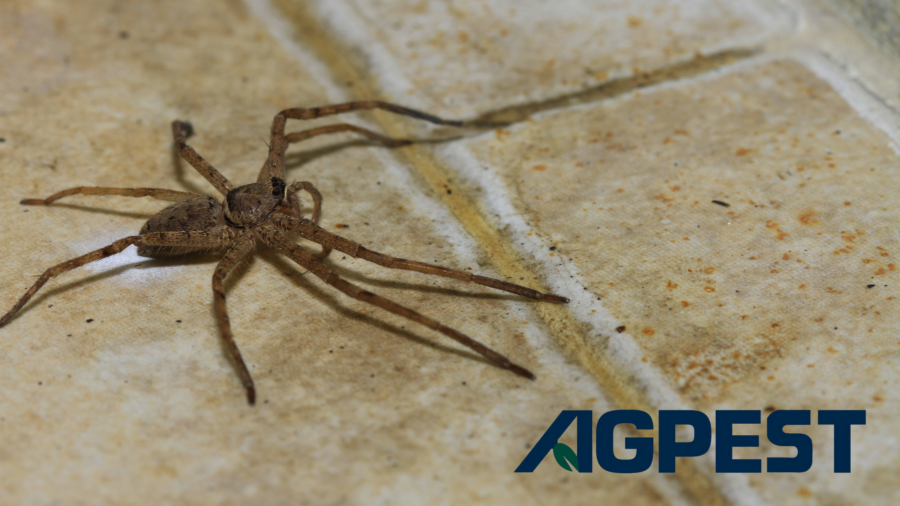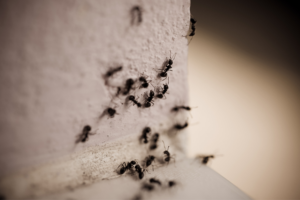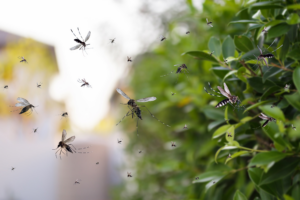San Diego is known for its beautiful year-round weather, with mild winters and sunny days even in the cooler months. However, as temperatures shift during the fall, residents might notice an increase in one particularly creepy-crawly critter: spiders. While San Diego doesn’t have a specific “spider season” like other parts of the country with more defined seasonal changes, spider activity does increase in the fall, making this the time of year when they’re most visible. Understanding spider behavior, the types of spiders you might encounter in San Diego, and prevention methods can help keep your home spider-free.
When is Spider Season in San Diego?
Though San Diego has a relatively temperate climate all year, the fall months often see an uptick in spider activity. This is due in part to spider mating season, which typically happens from late summer to early fall. During this time, male spiders are actively seeking out females, which leads them to wander into homes and other indoor spaces. The drop in temperature at night also causes some spiders to move indoors in search of warmth and shelter.
Because of this, you may notice more spiders entering your home or nesting in your yard in the fall. This doesn’t mean that spiders aren’t present during other times of the year—they are just less noticeable outside of this busy mating period. So, while there isn’t a dedicated spider season, the fall certainly brings more spiders into view.
Common Spiders in San Diego During the Fall
San Diego is home to a variety of spiders, some of which are harmless, while others can pose more of a threat to your home and family. Here are a few common species you’re likely to encounter:
1. Black Widow Spider
Arguably one of the most well-known and feared spiders in Southern California, the black widow is identified by its shiny black body and the distinct red hourglass marking on its abdomen. While their bites can be painful and potentially dangerous due to the venom, black widows generally avoid humans and will only bite if threatened.
2. Brown Recluse Spider
Although less common than the black widow, the brown recluse is another spider to be cautious of. They are brown with a violin-shaped marking on their back and are typically found in dark, secluded areas. Their bites can cause serious skin damage, so it’s important to be aware of their presence in your home.
3. Wolf Spider
Wolf spiders are larger and tend to look more intimidating than they actually are. These spiders are often found outdoors, but they may wander inside during the fall. They don’t spin webs and are more likely to hunt their prey directly. Their bites are not dangerous to humans, though they can be painful.
4. House Spider
As its name suggests, the house spider is commonly found indoors. These small, brownish spiders are harmless and generally build webs in corners, basements, and attics. While they don’t pose any threat to humans, they can be a nuisance if left unchecked.
Ways to Prevent Spiders in Your Home
Whether you’re dealing with a harmless house spider or something more intimidating like a black widow, keeping your home spider-free is a priority for many homeowners. Here are some practical ways to prevent spiders from taking up residence in and around your house:
1. Seal Entry Points
Spiders can squeeze through surprisingly small cracks and crevices to enter your home. Inspect your windows, doors, and foundation for any gaps, and seal them with caulk or weatherstripping. This not only keeps spiders out but also prevents other pests from entering your home.
2. Keep Your Home Clean
Spiders tend to be attracted to clutter and dark, undisturbed areas. Keeping your home clean and free of clutter, especially in attics, basements, and storage areas, can help deter spiders. Regular vacuuming will also remove any spider webs or egg sacs that might be present.
3. Turn Off Outdoor Lights
Outdoor lights attract insects, which in turn attract spiders. By turning off unnecessary outdoor lights at night, you reduce the number of insects around your home, which can help keep spiders at bay.
4. Maintain Your Yard
Spiders often hide in woodpiles, tall grass, and bushes. Regularly trimming bushes, cutting the grass, and keeping firewood stacked away from your home can reduce the likelihood of spiders moving inside.
5. Use Natural Repellents
Essential oils like peppermint, eucalyptus, and tea tree oil are known to repel spiders. You can create a DIY spider repellent by mixing a few drops of essential oil with water in a spray bottle and applying it around entry points and areas where spiders are commonly seen.
6. Professional Insect Control
If you have a persistent spider problem or are dealing with potentially dangerous spiders like black widows or brown recluses, it’s best to call in a professional pest control company. They can provide targeted treatments to eliminate spiders and prevent them from returning.
What to Do if You Have a Spider Problem
If you find yourself dealing with an unwanted spider invasion, there are several steps you can take to address the issue:
1. Do-It-Yourself Insect Control
For minor infestations or to prevent spiders, you can start with DIY insect control methods. Sticky traps placed in dark corners or along baseboards can help capture spiders. You can also use over-the-counter insect control sprays designed for spiders.
2. Call a Pest Control Company
If your spider problem is more severe or you’re concerned about venomous spiders, it’s time to reach out to a professional pest control company. Pest control experts can assess the extent of the infestation and provide targeted treatments that are safe for your home and family. Look for pest control companies in your area by searching for “insect control near me” or “pest control near me.”
3. Regular Insect Control Services
The best way to prevent a spider problem from recurring is to invest in regular pest control services. A professional insect control company can help you maintain a spider-free home by treating both the interior and exterior of your property. Regular treatments are especially important during the fall when spiders are most active.
While San Diego doesn’t have a defined “spider season,” the fall is when spider activity tends to increase due to mating season and cooler temperatures. Understanding the types of spiders common in the area, how to prevent them from entering your home, and when to call a professional for help can make all the difference in keeping your home spider-free.
Whether you choose to tackle a spider problem with do-it-yourself insect control methods or hire a professional pest control company, the key to managing spider infestations is consistent prevention and quick action. If you notice an increase in spiders this fall, take the necessary steps to protect your home and family from these common fall pests.



